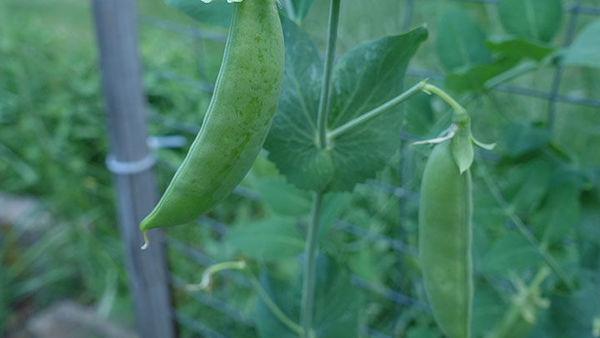Welcome to Homegrown/Homemade, a new video series from FineGardening.com and FineCooking.com. We’ll be following a gardener (Fine Gardening associate editor Danielle Sherry) and a cook (Fine Cooking Web producer Sarah Breckenridge) as they plant, maintain, harvest, store, and prepare garden vegetables. Peas are planted early in the season, so we’re beginning with peas.
Cooking with Peas: Fresh Pea and Mint Soup with Lemon Cream
Sarah helps Danielle overcome a lifelong aversion to the split-pea soup of her childhood with a light and delectable pea soup that starts with a broth made from pea pods. Get the recipe at FineCooking.com.
Episode 1: How to Plant Peas
St. Patrick’s Day is the traditional time to plant peas in the Northeast, and if your garden soil is workable and not too wet, you can get the seeds in the ground. To speed germination, soak the seeds in water for at least a couple of hours before planting. Coating the seeds with inoculant (which is available at garden centers) also aids germination. After planting, keep the seeds well watered.
Episode 2: How to Care for Peas
When your pea plants are a couple of inches tall, think about offering them support so they won’t topple over into a tangled snarl. Depending on the variety, pea plants can grow up to 6 ft. tall, and trellising is one option. The stakes for this trellis are fastened securely to the raised bed with a screw gun. Once the stakes are in position, netting is stapled to them. Another way to support peas is to build a four-pole tipi, and a third way is to use brush offcuts. Here’s a tip you might not have thought of: fasten your pea vines to their supports with strips cut from old stockings or panty hose. It’s smart recycling, and it stretches as the vine grows.
Episode 3: How to Harvest Peas
The trickiest thing about harvesting peas is knowing when they’re ripe. You don’t want to pick them when the peas are undersized, but if you wait too long the peas will lose their sweetness and turn hard. Morning is the best time to peak, because the sugar content is highest then. At peak ripeness the outer shell will be bright green, not dull and waxy. Continue to pick the vines as the peas ripen. If you do that, the plants will keep flowering and continue to produce, at least until the weather gets really hot.
Episode 4: How to Prep Peas
The first task in pea prep is shelling the peas. If you plan on freezing them, follow these steps to preserve their flavor and color. When picked, the sugars in peas turn quickly to starch, but you can stop that process by blanching. Cook the peas in salted boiling water until tender (a couple of minutes), followed then dunk them in ice water to set the sugars and preserve the bright green color. Next, drain and dry the peas, then spread them out on a baking sheet covered with parchment paper. That way, the peas will freeze separately, without clumping. Put the baking sheet in the freezer, and once the peas are frozen, transfer them to a plastic bag for long-term storage.

















Comments
Log in or create an account to post a comment.
Sign up Log in